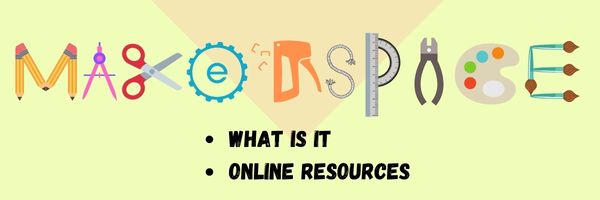Creating Autism Interventions that Promote Flexibility: Your Ultimate Guide? One thing we know about the learning style of Autistic people is that there is often a strong adherence to routines. This can sometimes really work to their advantage. Imagine...
Creating Autism Interventions that Promote Flexibility:
Your Ultimate Guide?

One thing we know about the learning style of Autistic people is that there is often a strong adherence to routines. This can sometimes really work to their advantage. Imagine the child who always comes into the classroom, hangs their backpack, washes their hands, and then gets out their supplies. And some routines just bring them joy, which matters � arguably � more than anything.�
But it can also be an incredible source of stress. Many times a child can come to depend on a routine, and when that routine changes it is like the rug has been pulled out from under them. And let�s face it, in our daily lives, even the most useful routine is subject to change. There are field trips and fire drills; parents have appointments and holidays; weather interferes with our outdoor plans. There are a thousand reasons that every routine will eventually be challenged.
Maybe this has happened to you: you create a schedule to help an Autistic child with transitions during their day. You add pictures, laminate it, and teach them to use it. And it really helps! But when the schedule changes, suddenly they become so much more stressed.
Or perhaps you�ve created a routine for your therapy sessions to make the sessions more predictable. The child always starts with the same activity, does four tasks at the table, plays with the same selection of toys, gets a snack, and leaves. But then you add a new goal, change the routine, or make some other necessary change, and the child becomes stressed.
Or maybe you�ve taught a child to use a new toy � and they loved it! You celebrated their success, and then realized that they will only use it in the exact way you taught it. Letting others use the toy or using it in different ways is stressful and unexpected for the child.
As therapists, we must ask ourselves: are our interventions creating new� routines that will bring more stress for the child when they change? If your answer is yes, don�t worry. There are things you can do to help your clients learn to use their new skills with greater flexibility so that they can thrive in a world that demands we adapt to constant change.
Before we dive deep into flexibility, I want to pause and acknowledge that keeping routines is okay. We can respect the learning style of our Autistic clients and not try to infuse flexibility for flexibility�s sake into every routine and activity. BUT if the activity may one day change, teaching that possibility from the beginning can reduce stress in our clients� lives. We want to do it thoughtfully, and at times that the child has the capacity and bandwidth to practice.�
Why Flexibility Matters
It�s easy to ignore the question of flexibility and keep moving forward with the status quo, especially if your clients are making progress in your sessions. Many of us will be tempted to write goals that don�t consider flexibility, and when our clients meet their goals we simply consider them done. We teach our kids to use new materials, to eat new foods, to follow a schedule, to do academic or fine motor activities at the table. And when they can do them, we mark the goal as complete. On the surface, we are doing a great job.
But as our clients move into the world, the schedules change, the toys look different or must be shared, the food comes in different packaging, and the learning activities are presented in a different way. For those of us who don�t struggle with flexibility, this is no big deal. But for our kids who count on their routines to stay the same, this can be a major stressor.
Take a step back and consider the things you really count on to be the same. You know where to find your toothpaste in the morning. Your shoes fit on your feet every day. Gravity always keeps your furniture on the ground. Imagine your frustration if your toothpaste was suddenly in a different place each day, and you couldn�t predict where to find it. How would you feel if your shoes suddenly didn�t fit for no discernible reason. Or what if you came home and your furniture was on the ceiling. You would probably begin to feel anxious�after all, if you can�t count on these things to stay the same, what can you count on? Is the world so unpredictable?

For many autistic kids, changes in routine can feel like the furniture suddenly being on the ceiling. And when we�ve taught them to expect things to stay the same and then things suddenly change, we�ve helped create this stressful and seemingly unpredictable world for them.
While we can protect some routines that our clients rely on, the overall answer is not to make sure everything stays the same. In the long run that won�t help, and even in the short run it will reach its limit of feasibility very quickly. We also don�t want to take away routines and predictability without giving our kids the tools they need to cope with and understand the change.
The answer is to teach our Autistic clients to use new skills flexibly from the beginning.
When we teach with an eye for flexibility, we can watch as our kids learn to look to their schedules to see what changes they can expect that day. We�ll feel proud as they use their materials in a variety of ways, share them with others, and use their new skills in different places and under new circumstances. We�ll create systems that allow our kids to know what to expect even though things may change day to day or session to session. And we can feel proud that we are truly helping our clients cope with their ever-changing daily lives.
How to Teach Flexibility
If you�re ready to teach flexibility, it�s essential that you teach your clients to look at their systems (schedules, to do lists, etc.) to see what to expect, rather than to rely on a memorized routine. Here�s what I mean: when I look at my calendar each day, I know it will tell me what I need to do on that day, but I also know I cannot count on it to be the same each day.
If my schedule is always the same, I�ll probably stop looking at it. Then I may be surprised that I�ve missed an important one-time appointment (sorry dentist!). Similarly, I may come to expect it to be the same and feel duped when it changes. If my job was always to see six clients in a day and then one day without warning I was asked to see 12, no chance I�d do it without complaining.
Here are a few things you can try to help teach your clients flexibility:
1. When you create schedules or to-do lists for your clients, create systems that require them to do something. This may mean checking things off of a list, moving pictures or objects to finished, turning pages in a flip book, or even using objects functionally. If you create lists or instructions that are just for reference, they will certainly be ignored.
2. Make changes early and often on your schedules. If you make a schedule that will stay the same and laminate it, not only will your clients not use it, they will also expect it to remain the same.
Instead, make a schedule that allows for change. It doesn�t need to look beautiful. It just needs to show your clients what to expect. Here are the two types of changes you need to be able to show:
Day to day changes. For my clients who struggle with flexibility, I change the order of at least a couple of activities starting from the very beginning. If today they did table and then play area, tomorrow they may do table and then outside time. It�s important to show them what to expect on their schedule (and remember, it needs to be a schedule they can understand such as an object schedule, picture schedule, or written schedule). But the changes will keep it from becoming a memorized fixed routine.
Last minute changes. Last minute changes happen too. This is when you�ve already shown the child the schedule, and suddenly you need to change something. You don�t want the first time this happens to be at a moment that�s out of your control. So it�s best to practice this intentionally. After the child has seen the schedule, never sneak a change behind their back by erasing something or swapping out pictures or objects. It will just teach them not to trust the schedule. Instead, show them the changes on their schedule. You can change the pictures in front of them, or mark something off and write in the change while they watch, explaining it in a way they can understand.
It�s best to work our way up to difficult changes in the following way:
First, make a positive change. Remove something the child doesn�t enjoy and perhaps replace it with something they like. This helps them have a positive experience of last-minute changes.
Then, make a neutral change. Remove something the child neither likes nor dislikes, and perhaps replace it with another neutral activity.
Finally, make a challenging change. Remove something the child enjoys. Eventually you may try replacing it with something less favorable.
3. You may also need to change up your activities, instructions, and your to-do lists.
Many kids on the autism spectrum have a great deal of flexibility. But others may develop routines extremely quickly. If you�re working with a child who develops routines quickly, it�s important to make changes early and often. For example, if you give them three activities at the table for the first few sessions and then try to give them five, it may be that you�ve created a routine and then broken it.
For kids who struggle with change, it�s important to use a visual to-do list so they can see what they have to do. And as we discussed above, make sure they have a way to use the list (not just reference it) so it doesn�t become ignored. But to prevent it from becoming a memorized routine, change the number and order of activities frequently, and don�t always start with the same one. I can count on my to do list to show me what I have to do, but I can�t count on it to always be the same length or contain the same activities. We want our kids to learn the same from the very beginning.
You may also need to change the visual instructions in your activities. The instructions need to tell them what to do, not a memorized routine that they have with the materials. So if today they are sorting red bears from blue, tomorrow their instructions may show them to sort bears from balls. Or if today they are putting silverware away into a drawer, maybe tomorrow they will put it away into canisters. If the instructions are always the same, our kids will likely learn to ignore the instructions, and they may resist when we eventually try to change the activity.
The same goes with sharing. For your clients who are working on sharing materials and playing flexibly, it�s best to start practicing this right when they get a new toy. Once a more fixed routine starts it is so much harder to change. But you can teach them early on that there are lots of ways to play with a toy, and that sometimes mom or another kid may be playing with the materials too.
It�s Totally Worth It!
When we teach flexibility, we aren�t just pulling the carpet out from under our clients. We are creating systems to help them understand change and see it coming, so that when it inevitably happens they will be able to adapt without unnecessary stress.
Carrying on with the status quo can be tempting. But teaching our kids flexibility is so much more functional for them in their lives, and also much more rewarding to us as therapists. We can have the satisfaction of knowing that we are helping our clients cope with an ever-changing world.
To fill your neurodiversity-affirming toolbox, checkout the LPT Education Hub.
Browse More Posts
Making Schedules for Autistic Kids
3 Essential Types of Visual Supports To Help Autistic Kids Succeed
Rethinking Hand-Over-Hand Assistance for Autistic Kids
A Confident OT: What It Looks Like & How to Get There
Creating Autism Interventions that Promote Flexibility:
Rethinking Reinforcers for Autism
The post Creating Autism Interventions that Promote Flexibility: appeared first on Learn Play Thrive.








